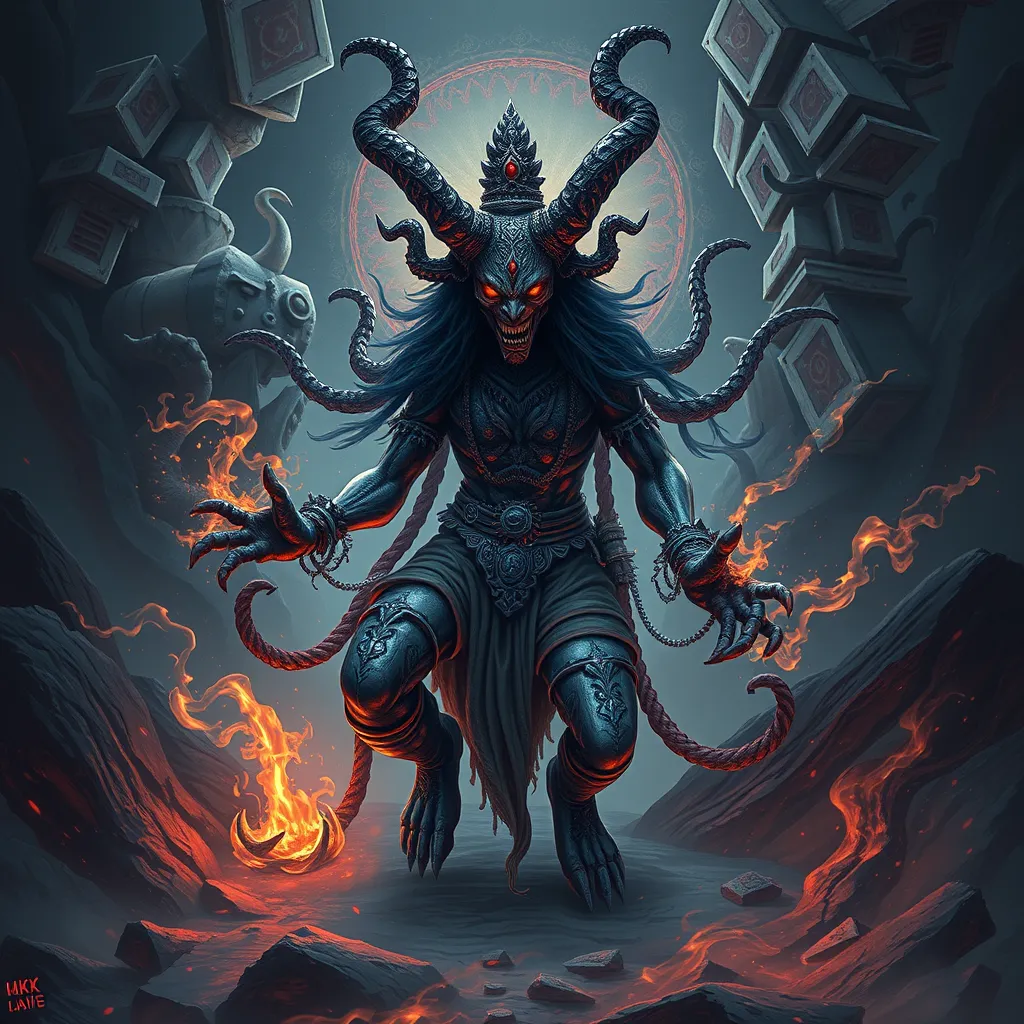The Rakshasa in Vedic Literature: The Demonic Counterpart of the Gods
I. Introduction
Vedic literature, one of the oldest and most significant bodies of religious texts in India, offers a profound insight into the spiritual and cultural ethos of ancient Indian civilization. These texts encompass a range of philosophies, rituals, and narratives that have shaped Hindu thought and practice over millennia.
Within this vast literary landscape, Rakshasas emerge as intriguing figures, often depicted as demonic counterparts to the divine. These beings represent chaos and moral ambiguity, serving as antagonists in many Vedic narratives. This article aims to explore the role and significance of Rakshasas in Vedic literature, shedding light on their enduring relevance in contemporary discussions of mythology and ethics.
II. Historical Context of Rakshasas
A. Origins of Rakshasas in ancient Indian texts
The concept of Rakshasas traces its origins to ancient Indian texts, where they are first mentioned in the Rigveda and later elaborated upon in the epics and Puranas. Initially, they were seen as spirits or beings that could be protective or harmful, reflecting the duality of nature.
B. Evolution of the concept throughout Vedic and post-Vedic literature
Over time, the portrayal of Rakshasas evolved, becoming more closely associated with malevolence and opposition to the Devas (gods). In the Ramayana and Mahabharata, they are often depicted as formidable adversaries, embodying the chaos that disrupts cosmic order. This transformation mirrors the changing perceptions of good and evil within the cultural context of India.
C. Comparison with other mythological demons in global traditions
The archetype of the Rakshasa can be compared to similar figures in other mythological traditions around the world, such as:
- Demons in Mesopotamian mythology: Spirits like the Lamashtu, who were believed to harm pregnant women and infants.
- Jinn in Arab folklore: Supernatural beings that can be either benevolent or malevolent.
- Oni in Japanese tradition: Demonic creatures known for their brutal nature and fierce appearance.
III. Characteristics of Rakshasas
A. Physical descriptions and attributes
Rakshasas are often described as large, fearsome beings with terrifying features. They are depicted as having:
- Long, sharp claws
- Glowing eyes
- Varied forms, including those that can change shape at will
B. Behavioral traits and moral complexities
Rakshasas exhibit a wide range of behaviors, from cunning and deceitful to outright violent. They are often associated with:
- Trickery and manipulation
- A propensity for violence and aggression
- Complex moral dilemmas, often challenging the notions of good and evil
C. Symbolism of Rakshasas in relation to chaos and disorder
In Vedic literature, Rakshasas symbolize chaos and disorder, representing the forces that disrupt the cosmic balance maintained by the Devas. Their existence prompts a continuous struggle for harmony and order in the universe.
IV. Rakshasas in Major Vedic Texts
A. Analysis of the Rigveda and its references to Rakshasas
In the Rigveda, Rakshasas are mentioned as beings that invoke fear and are often associated with darkness. The text portrays their opposition to the light and order represented by the Devas.
B. The role of Rakshasas in the Ramayana
The Ramayana serves as a foundational narrative for understanding Rakshasas. Ravana, the principal antagonist, embodies the quintessential Rakshasa. His character presents a complex blend of power, intelligence, and moral ambiguity, challenging the simplistic good-versus-evil dichotomy.
C. Examination of other texts: Mahabharata, Puranas, and Upanishads
Further references to Rakshasas appear in the Mahabharata, where they are depicted as formidable warriors. The Puranas elaborate on their origins and genealogies, while Upanishadic texts hint at their philosophical implications, exploring themes of illusion and reality.
V. Rakshasas vs. Devas: The Cosmic Duality
A. The ideological conflict between Rakshasas and Devas (gods)
The tension between Rakshasas and Devas symbolizes the eternal conflict between chaos and order. This duality is central to the narrative structure of Vedic literature, reflecting the human experience of grappling with moral and ethical dilemmas.
B. Themes of good versus evil in Vedic literature
Vedic texts often explore themes of good versus evil through the lens of the conflicts between Rakshasas and Devas. These narratives illustrate the complexities of morality, suggesting that good and evil are often intertwined.
C. The significance of balance in the cosmic order
The presence of Rakshasas serves as a reminder of the necessity for balance in the cosmos. Their existence underscores the idea that chaos is an integral part of the universe, prompting the Devas to maintain order and righteousness.
VI. The Cultural Impact of Rakshasas
A. Influence on folklore and popular culture in India
The figure of the Rakshasa has permeated Indian folklore, inspiring numerous tales that explore their characteristics and deeds. This influence extends into modern storytelling, where Rakshasas are frequently depicted in films and literature.
B. Representation in art, dance, and theater
In Indian classical dance and theater, Rakshasas are portrayed with elaborate costumes and dramatic performances, highlighting their fearsome nature. These representations emphasize the cultural significance of these beings in Indian mythology.
C. Modern interpretations and adaptations in literature and media
Contemporary literature and media continue to reinterpret the Rakshasa archetype, often exploring themes of identity, power, and morality through these characters. This adaptability speaks to their relevance in modern narratives.
VII. Contemporary Relevance of Rakshasas
A. Lessons from Rakshasa narratives in today’s society
The narratives surrounding Rakshasas provide valuable lessons about the nature of evil, the consequences of unchecked ambition, and the importance of moral integrity in society.
B. The metaphorical application of Rakshasas in psychological and social contexts
In modern psychology, Rakshasas can symbolize the inner demons that individuals face. The struggle against these demons reflects the human condition and the quest for self-awareness and control.
C. Discussions on morality and ethics derived from Rakshasa stories
Rakshasa stories prompt discussions on the nature of morality, compelling individuals to reflect on their values and the ethical implications of their actions in a complex world.
VIII. Conclusion
This exploration of Rakshasas in Vedic literature reveals their multifaceted nature and enduring significance. From their origins in ancient texts to their contemporary interpretations, Rakshasas embody the complexities of good and evil, chaos and order.
Understanding these mythological figures deepens our appreciation of the cultural narratives that shape our identities. As we reflect on the lessons from Rakshasa stories, we recognize their relevance in navigating the moral landscapes of modern society.



